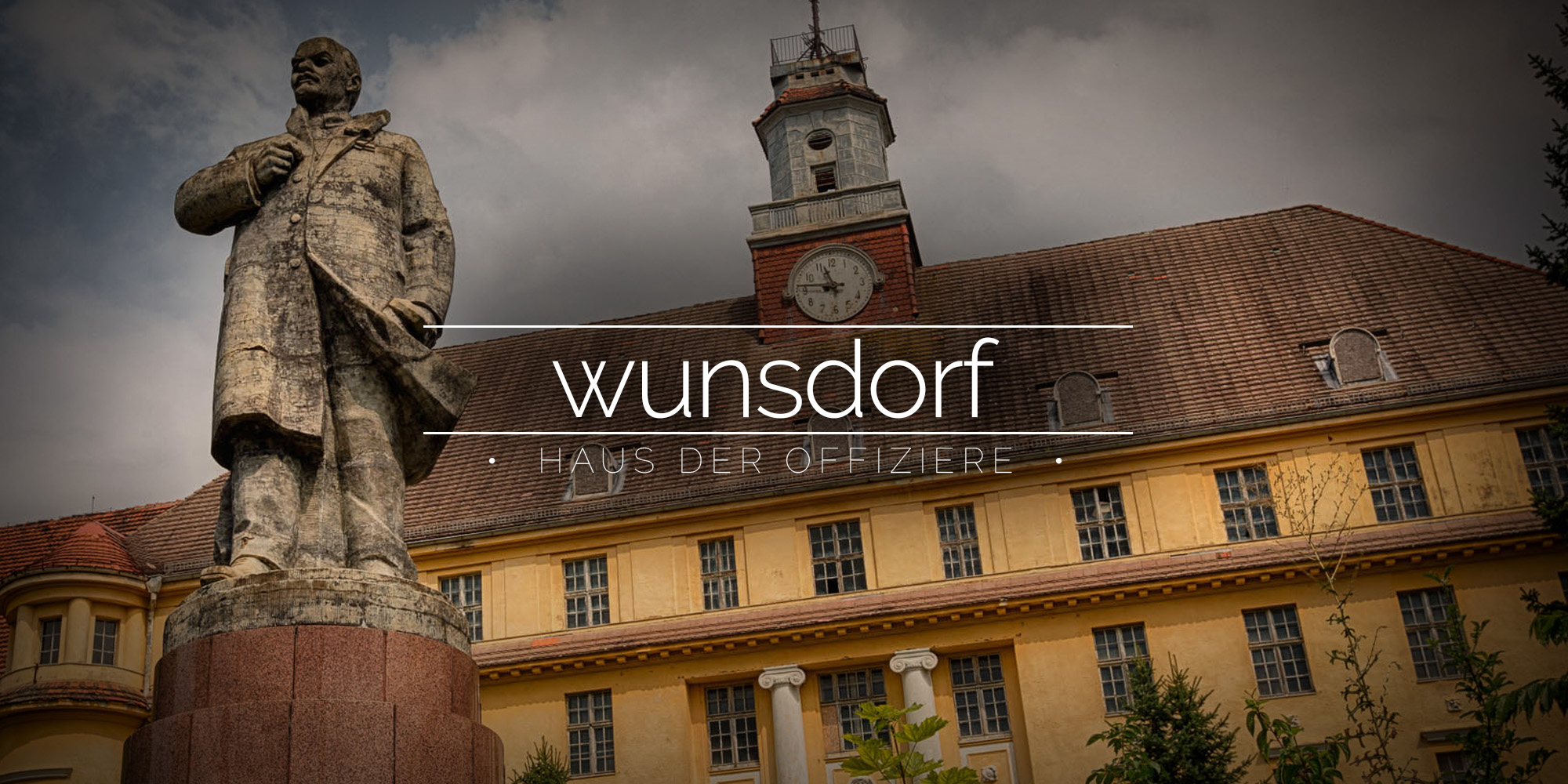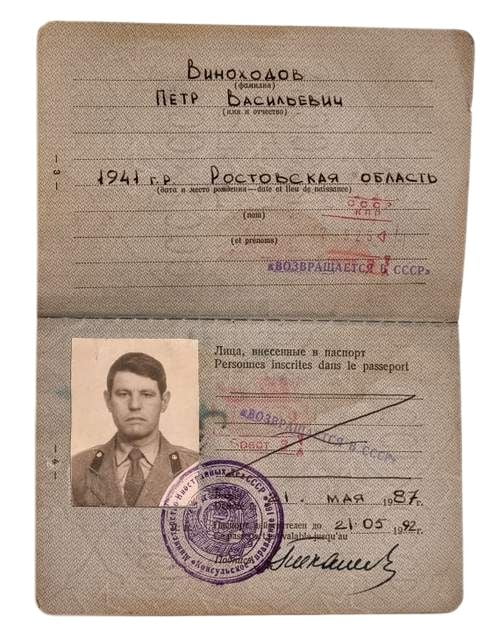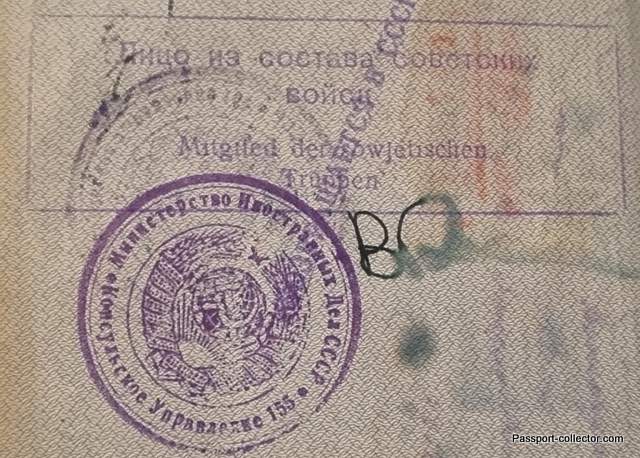The Soviet Army in the GDR – Service Passport
The Soviet army was an integral part and permanent guest of the GDR. The withdrawal of the Russian Western Group of Troops (WGT) on August 31, 1994, was sealed by a state act. Soviet Army GDR Passport
In the Two Plus Four Treaty, which was concluded on September 12, 1990, between the four victorious powers as well as the FRG and the GDR (officially “Treaty on the final settlement concerning Germany”), among other things, the membership of the reunited Germany in the western defense alliance, NATO, the reduction of the future Bundeswehr to 370,000 people, the guarantee of Poland’s western border and also the withdrawal of the western group of Russian troops (WGT) from Germany.
In return for these far-reaching concessions by the USSR ( Germany’s membership in NATO was particularly controversial), the Federal Republic declared that it was willing to provide funds to finance the withdrawal and build apartments in the USSR for soldiers who had returned home. These funds initially amounted to around 12 billion Deutsche Mark, of which about 7.8 billion DM was for house building. Therefore, the withdrawal of the WGT should be completed by the end of 1994. Soviet Army GDR Passport
| Soviet troops in Germany When discussing the Soviet troops in Germany, different terms are used in the literature. The “Group of Soviet Occupation Troops” (GSBT), which had been stationed in the Soviet-occupied zone (SBZ) since 1945, became the “Group of Soviet Forces in Germany” (GSSD) after the official end of the occupation in 1954. In 1989, during perestroika under CPSU General Secretary Gorbachev, the group was renamed the “Western Group of Troops” (WGT). This term is used in this article. |
In a German-Soviet partnership agreement, which was signed on the first anniversary of the fall of the Berlin Wall, the two states also agreed on an agreement to reduce the size of the Bundeswehr squads on extensive cooperation in the areas of business, culture, and human rights, and on mutual respect and maintenance of memorials and war graves.
Uncertainty about the withdrawal existed during the coup against Gorbachev in August 1991, when it was unclear how the WGT would position itself politically. With the dissolution of the Soviet Union on December 31, 1991, the Western Group fell commanded by the President of the Russian Federation in March 1992, who promised to carry out the withdrawal as planned. An attempted armed coup against President Yeltsin on October 4, 1993, also resulted in no delay in the departure.
On August 31, 1994, several months before the agreed departure date, the last soldiers of the western group were finally dismissed in the presence of Russian President Boris Yeltsin. In Berlin, a final parade took place at the memorial to the fallen Soviet soldiers in Treptower Park. Before that, there had been an official ceremony at Gendarmenmarkt, where General Matvey Burlakov, the supreme commander of the armed forces, deregistered his troops in East Germany. Soviet Army GDR Passport
“I report: that the interstate treaty on the conditions of the temporary stay of Russian troops and the modalities of withdrawal has been fulfilled.”
-General Matvey Burlakov-
The scene from that day is remembered when Boris Yeltsin, apparently slightly intoxicated, seized the baton in front of the Schöneberg town hall and conducted the Berlin police orchestra.
The departure of the soldiers and the problems
The withdrawal was a logistical effort: accomplished between 1991 and 1994 was arguably the largest peacetime deployment in military history. In 1991, the WGT was stationed on properties covering an area of 2,430 hectares (approx. 2.7 percent of the GDR area, roughly the size of Saarland). Covering: Soviet Army GDR Passport
- 337,800 soldiers
- 44,700 civilian employees
- 163,700 family members
- 4,288 main battle tanks
- 8,208 armored vehicles
- 3,682 artillery systems
- 691 aircraft
- 683 helicopters
- 106,094 motor vehicles
- approx. 2.75 million tons of material, including 677,032 tons of ammunition
These figures become even more impressive when one considers that troops from Poland, Czechoslovakia, and Hungary were also withdrawn at the same time. In total, these troops gave another 267,500 people, including appropriate equipment. According to the agreement, between 1991 and 1994, about 30 percent of this continent was withdrawn each year. Rail transport and ferries across the Baltic Sea were used.
Housing program for ex-soldiers
When he was in Moscow in the spring of 1990 to negotiate the withdrawal of the western group, Lothar de Maizière (CDU), the last prime minister of the GDR, said: Soviet Army GDR Passport
“The soldiers knew: They leave as defeated victors and go into the social void.”
-Lothar de Maizière-
For the political leadership, the question of housing for more than half a million returning soldiers and family members was of the most significant importance. The Soviet government wanted to use a large part of the sum from Germany to build housing and the associated infrastructure such as shops, schools, or sports facilities for the returnees.
After some negotiations, both sides agreed on the construction of 70,000 apartments, and Germany should pay for 35,000 flats. Since companies from Finland, Turkey, and other countries received reasonable offers for housing construction, a total of around 45,000 apartments were completed at 40 locations in Russia, Ukraine, and Belarus by 1996.
This number is higher than agreed, but it cannot hide that the number was not sufficient to accommodate all the returning units. Especially for the soldiers who left early, there were still no apartments, so many soldiers had to stay in tent cities or makeshift shelters. In addition, there was corruption in the distribution of the new apartments, which were in great demand and, according to German information, were partly given to other people.
On the German side, there was talk of a success story, but given the housing problems in the successor states of the USSR, the housing construction program was, in fact, no more than a drop in the bucket. Soviet Army GDR Passport
Use of the barracks and military training areas left behind
After the withdrawal of the WGT in 1994, the Federal Republic of Germany took over the barracks and military training areas of the army. Large parts of the areas proved to be highly contaminated by ammunition, fuel, lubricants, and chemicals. As the new owner, the federal government offered the East German states the areas free of charge.
Mecklenburg-Western Pomerania, for example, turned down this offer due to the expected high renovation costs. On the other hand, Brandenburg, Thuringia, and Saxony decided to take over the entire property. The Bundeswehr also showed interest in re-using some of the military training areas. Three examples of subsequent use are to be presented as examples.
Headquarters of the Soviet troops in Wünsdorf
The former headquarters of the Soviet troops in Wünsdorf, located about 50 kilometers south of Berlin city center, was an important military site during and before both world wars. Between 1940 and 1945, the High Command of the Wehrmacht was based here. After 1945, the Soviet occupation forces made the place their headquarters. Up to 69,000 members of the GSSD or WGT were stationed here in the garrison town up to 1994 – in addition to around 2,700 inhabitants of the village of Wünsdorf.

The military town was a strictly guarded taboo zone. Even when Wünsdorf became an uninhabited ghost town after the Russian troops withdrew, access was blocked for a long time due to military contamination. This only changed when the state of Brandenburg decided to strive for use. In this context, the administration was outsourced here in parts of the state, such as the state offices for monument preservation and occupational safety. Soviet Army GDR Passport
Some former barracks have been converted into residential buildings. This required comprehensive clean-up of contaminated sites. Some housing projects were well received. In some projects, many apartments remained empty because the population growth in Wünsdorf initially did not develop as forecast.
There was also a desire to settle trades in the former garrison town. In 1998, antiquarians and historians created the so-called “Book City,” a collection of antiquarian bookshops with different thematic focuses on the former barracks site. There is also a museum about the history of the place and that of the Soviet troops in Germany. Today, Wünsdorf is also a magnet for so-called “Lost Places photographers” seeking deserted and mysterious photo motifs. The old and worn facilities, such as the garrison theater or the officers’ house, and the bunkers built by the National Socialists, attract visitors and bear witness to the small town’s long and checkered military history.
The Passport
A USSR Service type for an officer. Meet Vinokhodov Piotr Vasilyevich, born in 1941 in the Rostov district, who returned to now Russia in 1992. Exciting is the stamp in Russian and in German language “A member of the Soviet troops,” which I have seen not before in similar documents. His passport was issued in 1987 and was valid until 1992. There are several renewals made in the USSR for his duty in East Germany. There is no rank mentioned, but an ordinary soldier would not get a Service passport. He returned home in Feb 1992 via Poland. It will take another 2,5 years until the last USSR soldiers finally left reunited Germany. An exciting travel document of Cold War history.
Such documents are nowadays difficult to find as they were needed to travel back home, where a very different life for these soldiers began. For many, at least the officers, East Germany was a very comfortable temporary home.
Once again, thank you, Albert, for the translation! Soviet Army GDR Passport
FAQ Passport History
Passport collection, passport renewal, old passports for sale, vintage passport, emergency passport renewal, same day passport, passport application, pasaporte passeport паспорт 护照 パスポート جواز سفر पासपोर्ट
1. What are the earliest known examples of passports, and how have they evolved?
The word "passport" came up only in the mid 15th Century. Before that, such documents were safe conducts, recommendations or protection letters. On a practical aspect, the earliest passport I have seen was from the mid 16th Century. Read more...
2. Are there any notable historical figures or personalities whose passports are highly sought after by collectors?
Every collector is doing well to define his collection focus, and yes, there are collectors looking for Celebrity passports and travel documents of historical figures like Winston Churchill, Brothers Grimm, Johann Wolfgang von Goethe. Read more...
3. How did passport designs and security features change throughout different periods in history, and what impact did these changes have on forgery prevention?
"Passports" before the 18th Century had a pure functional character. Security features were, in the best case, a watermark and a wax seal. Forgery, back then, was not an issue like it is nowadays. Only from the 1980s on, security features became a thing. A state-of-the-art passport nowadays has dozens of security features - visible and invisible. Some are known only by the security document printer itself. Read more...
4. What are some of the rarest and most valuable historical passports that have ever been sold or auctioned?
Lou Gehrig, Victor Tsoi, Marilyn Monroe, James Joyce, and Albert Einstein when it comes to the most expensive ones. Read more...
5. How do diplomatic passports differ from regular passports, and what makes them significant to collectors?
Such documents were often held by officials in high ranks, like ambassadors, consuls or special envoys. Furthermore, these travel documents are often frequently traveled. Hence, they hold a tapestry of stamps or visas. Partly from unusual places.
6. Can you provide insights into the stories behind specific historical passports that offer unique insights into past travel and migration trends?
A passport tells the story of its bearer and these stories can be everything - surprising, sad, vivid. Isabella Bird and her travels (1831-1904) or Mary Kingsley, a fearless Lady explorer.
7. What role did passports play during significant historical events, such as wartime travel restrictions or international treaties?
During war, a passport could have been a matter of life or death. Especially, when we are looking into WWII and the Holocaust. And yes, during that time, passports and similar documents were often forged to escape and save lives. Example...
8. How has the emergence of digital passports and biometric identification impacted the world of passport collecting?
Current modern passports having now often a sparkling, flashy design. This has mainly two reasons. 1. Improved security and 2. Displaying a countries' heritage, icons, and important figures or achievements. I can fully understand that those modern documents are wanted, especially by younger collectors.
9. Are there any specialized collections of passports, such as those from a specific country, era, or distinguished individuals?
Yes, the University of Western Sidney Library has e.g. a passport collection of the former prime minister Hon Edward Gough Whitlam and his wife Margaret. They are all diplomatic passports and I had the pleasure to apprise them. I hold e.g. a collection of almost all types of the German Empire passports (only 2 types are still missing). Also, my East German passport collection is quite extensive with pretty rare passport types.
10. Where can passport collectors find reliable resources and reputable sellers to expand their collection and learn more about passport history?
A good start is eBay, Delcampe, flea markets, garage or estate sales. The more significant travel documents you probably find at the classic auction houses. Sometimes I also offer documents from my archive/collection. See offers... As you are already here, you surely found a great source on the topic 😉
Other great sources are: Scottish Passports, The Nansen passport, The secret lives of diplomatic couriers
11. Is vintage passport collecting legal? What are the regulations and considerations collectors should know when acquiring historical passports?
First, it's important to stress that each country has its own laws when it comes to passports. Collecting old vintage passports for historical or educational reasons is safe and legal, or at least tolerated. More details on the legal aspects are here...
Does this article spark your curiosity about passport collecting and the history of passports? With this valuable information, you have a good basis to start your own passport collection.
Question? Contact me...









